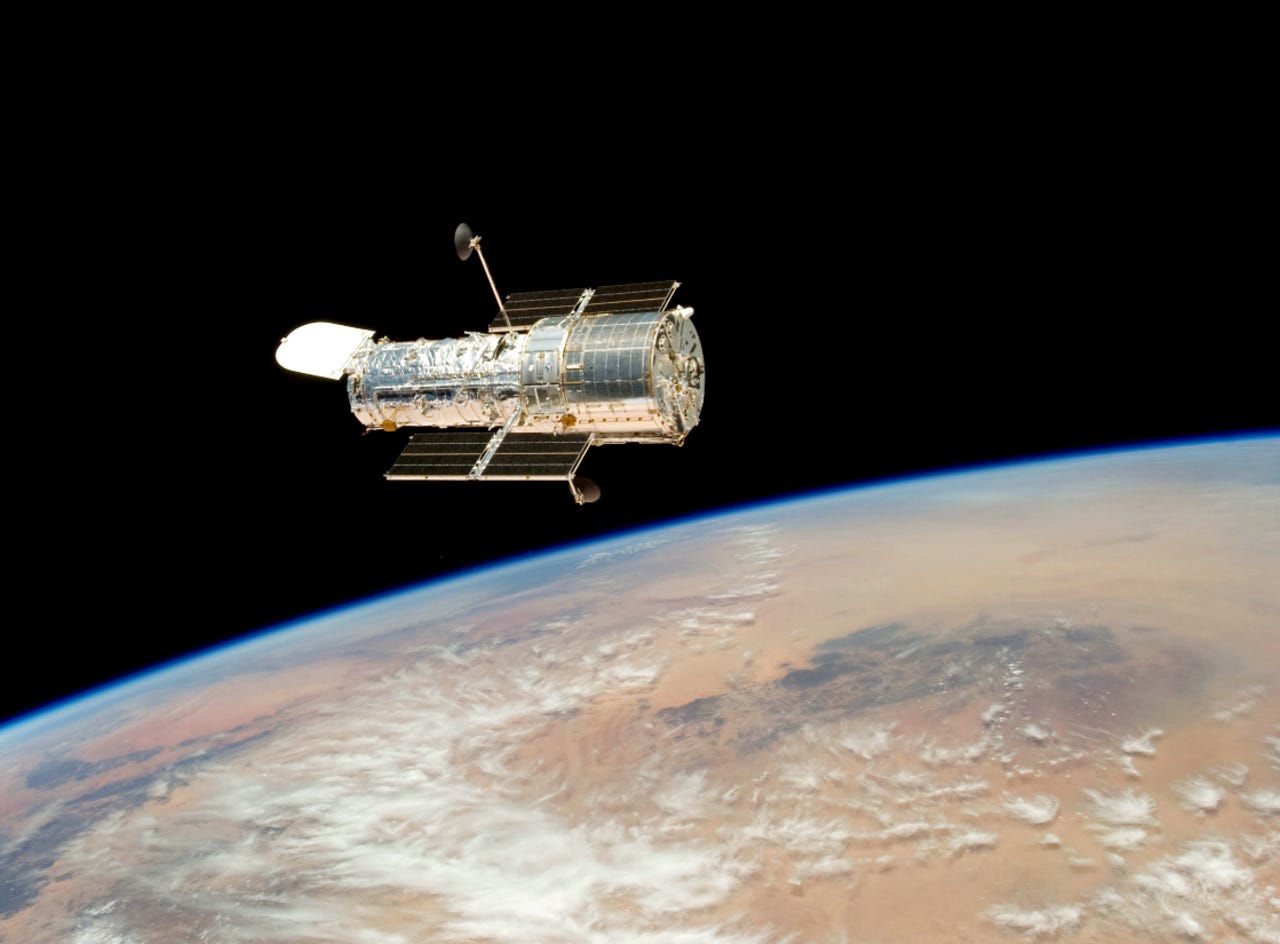NASA has just fixed the mysterious computer problem with its famous space telescope


NASA's Hubble telescope has been taking snaps of the universe almost 600 kilometers above the surface of the Earth for 31 years.
NASA's Hubble telescope, the giant space observatory taking snaps of the universe almost 600 kilometers above the surface of the Earth, is all set to get back to work after a month-long break caused by a stubborn computer glitch.
The space agency has confirmed that Hubble is up and running again, with all science instruments onboard the spacecraft operational and ready to start collecting data for researchers on the ground.
Innovation
After some final instrument calibrations are completed, the telescope will carry out an observation at the end of the week – the first one since some of Hubble's key hardware started playing up last month.
SEE: An IT pro's guide to robotic process automation (free PDF) (TechRepublic)
The issue started on June 13, when Hubble's payload computer froze. Located inside a unit called the Science Instrument Command and Data Handling module (SI C&D), which is responsible for synchronizing all of the science systems on the telescope, the payload computer's role is central to transmitting science and engineering data to the ground.
The glitch immediately caused the SI C&D to place all of the telescope's science instruments in safe mode, meaning that they stopped collecting or processing any data while waiting for engineers to identify the source of the problem.
It took the Earth-based Hubble team some time to diagnose the issue. Remotely carrying out tests on a system located in space, with no human crew on board, took some detective work and a few missteps: it soon turned out, for instance, that re-booting the payload computer wasn't going to cut it, and that finding the failing piece of hardware would be easier said than done.
NASA's engineers even brought in some of the members of the team who worked on Hubble in 1990, when the telescope was launched into space for the first time. After a series of tests, they concluded that the issue lay within the larger SI C&D system, and specifically identified that the culprit was the Power Control Unit (PCU), which ensures a steady voltage supply to the payload computer's hardware.
The PCU includes a power regulator, which provides a constant five volts of electricity to the payload computer, and a secondary system that checks voltage levels, and can tell the computer to stop operating if the amount of electricity supply is above or below normal levels.
Resetting the PCU using ground commands is not possible, which means that NASA had to prepare to switch to the backup side of the SI C&D module that contains the backup PCU – a risky operation, given that it also requires switching on backups for various other hardware boxes on the spacecraft that are also connected to this side of the SI C&D system.
After testing, simulating, verifying and reviewing, the Hubble team successfully swapped over to the backup system. This included bringing online the backup PCU, but also switching to the backup command and data handling unit, which sends and formats commands and data, and even turning on the backup payload computer, which also sits on the same unit.
NASA said that other additional pieces of hardware also had to be switched to their alternate interfaces to connect to the backup side of the SI C&D, as anticipated.
SEE: NASA is using data science to fill its data science skills gap
The swap took an entire day, after which the Hubble team started the process for recovering the science instruments out of their standby mode. The telescope is now fully ready to start observing again, and the team is hopeful that Hubble will soon be resuming normal operations. On any given week before the glitch, Hubble sent up to 150 gigabits of raw science data back to Earth.
"Hubble is an icon, giving us incredible insight into the cosmos over the past three decades," said NASA administrator Bill Nelson. "I'm proud of the Hubble team, from current members to Hubble alumni who stepped in to lend their support and expertise. Thanks to their dedication and thoughtful work, Hubble will continue to build on its 31-year legacy, broadening our horizons with its view of the universe."
Over the course of its 31-year-old career, Hubble has taken over 1.5 million observations of the universe, which have contributed to 18,000 scientific papers being published – thanks to the telescope's data. The space observatory is the reason behind some of the most significant scientific discoveries of our time, such as the accelerating expansion of the universe and the evolution of galaxies.
Hubble will soon be joined in space by the James Webb Space Telescope, which will launch next October to equip scientists with another set of eyes in the universe, which will help understand the evolution of the solar system. Both spacecraft are expected to be working in tandem to increase scientists' knowledge of the cosmos. It is clear, therefore, that – at least for now – Hubble won't be retiring anytime soon.